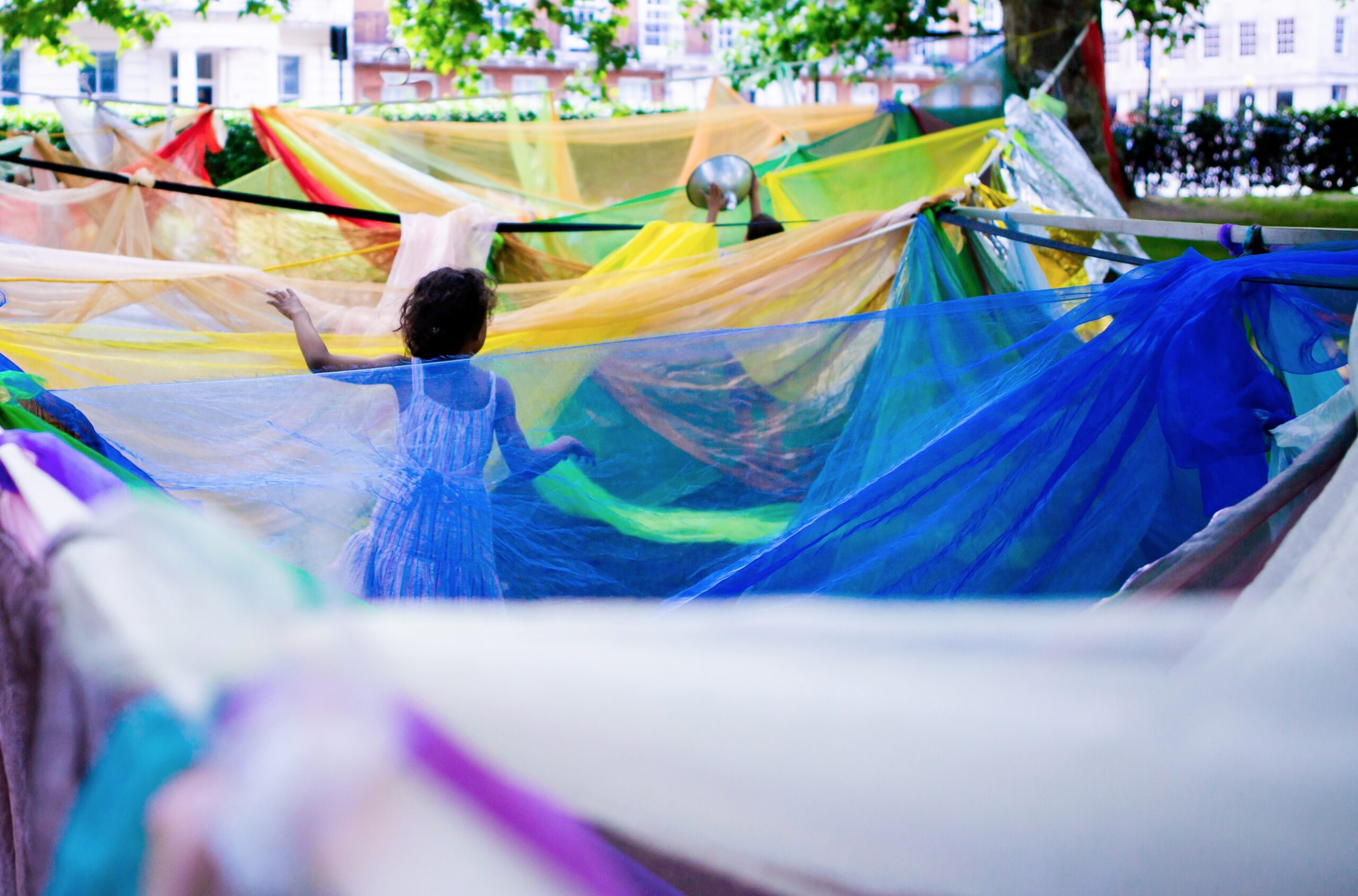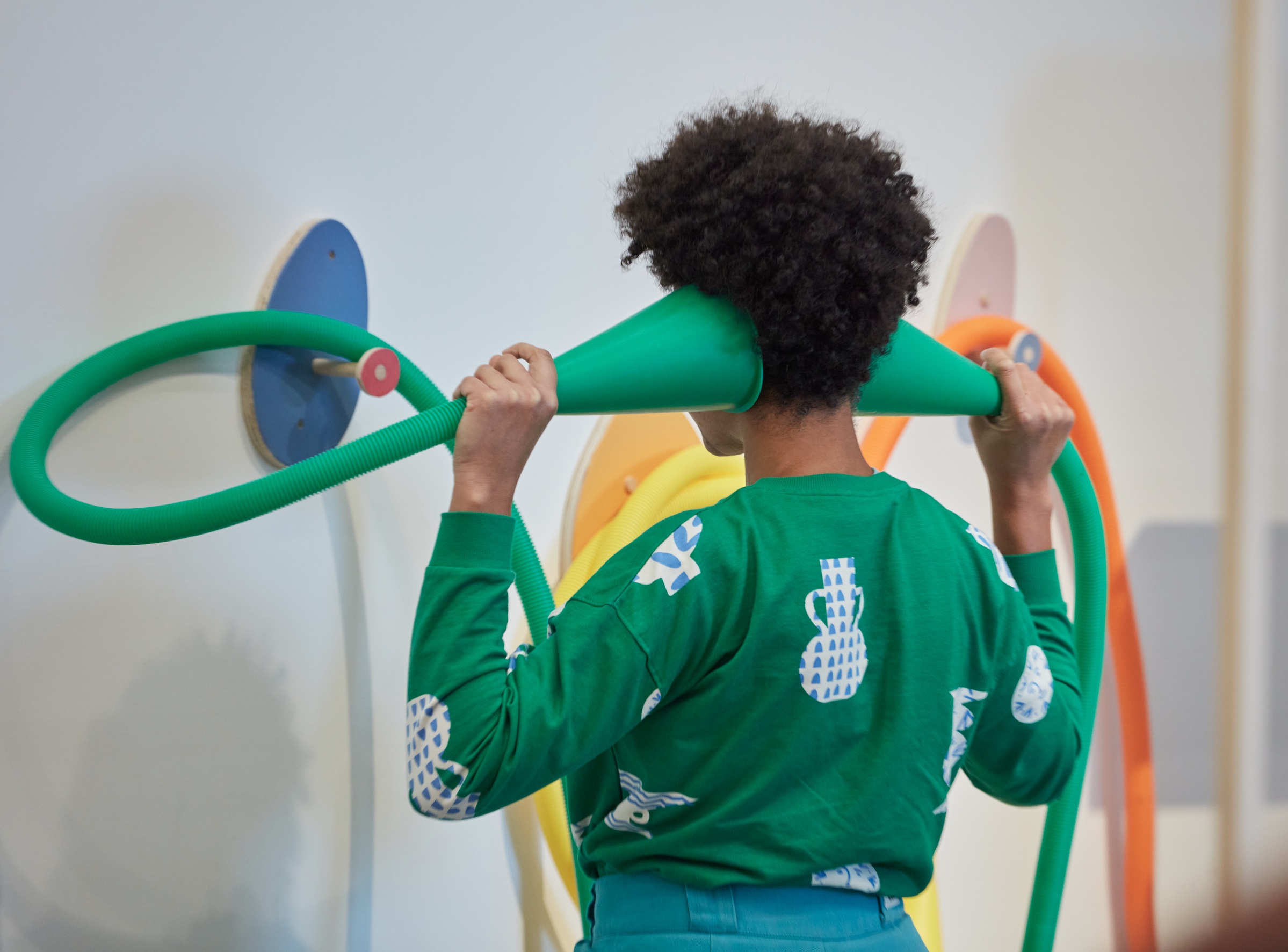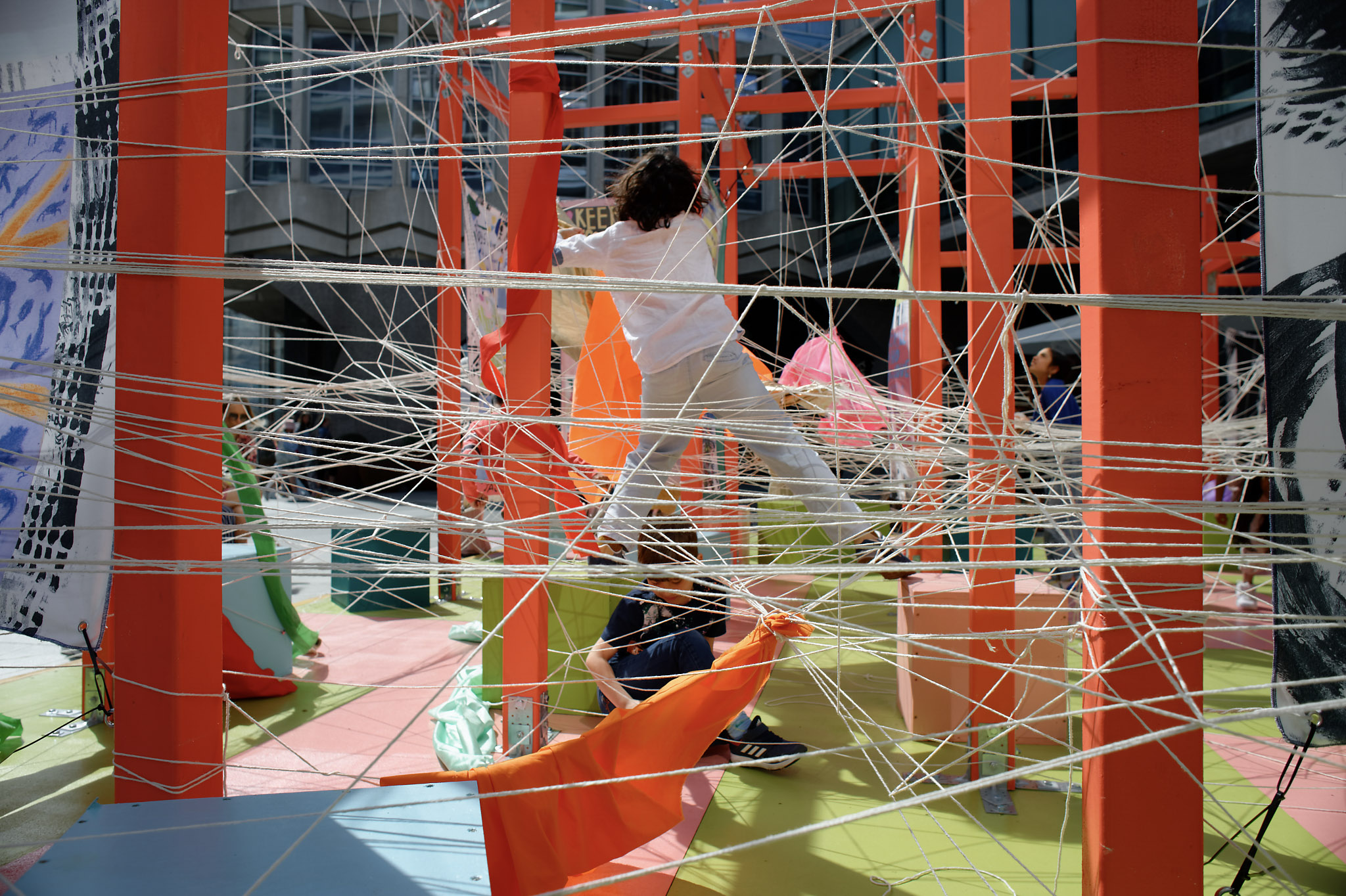As we gain a greater understanding of its importance in children’s learning and development, architects and artists around the world are developing innovative and visually stimulating landscapes to support exploratory and imaginative play
 Photography by Magpie Eye Kids Photography
Photography by Magpie Eye Kids Photography
Words by Riya Patel
In my 1980s suburban childhood, playing in public space was limited to the local park or recreation ground. The common British playground – rusty or graffiti-covered variations on a roundabout, see-saw, slide and set of swings – was about as exciting as it got. Even those were viewed with suspicion by my safety-conscious parents who preferred I play indoors.
From then to today outdoor play has been on a continuing downwards trend in the UK. In 2022, charity Save The Children found just 27% of children play regularly outside their homes, compared to 71% of the baby boomer generation. The Covid-19 pandemic and lockdowns of 2020 was the nadir for playing in public, but in the aftermath there’s hope it is back on the agenda in an expanded way.
Museums and galleries are increasingly embracing young audiences with participatory events and exhibitions, parks and pockets of private land are lending themselves to holistic play sessions, and the playground itself is undergoing reinvention to be more adventurous, child-led and accessible.
‘Play has shifted from something that was perceived as quite trivial to something absolutely fundamental to a child’s wellbeing,’ says Penny Wilson, a professional playworker with 35 years of experience. ‘The conversation [between the play world and other sectors] has just exploded.’ Wilson works with art, architecture and design collective Assemble on a dedicated branch of the practice (Assemble Play). Its first project was Play KX at King’s Cross in 2018, commissioned by developer Argent.
 Photography by Hugh Fox featuring Play Interact Explore, an exhibition of interactive artworks by Leap Then Look
Photography by Hugh Fox featuring Play Interact Explore, an exhibition of interactive artworks by Leap Then Look
‘I think they came to us expecting that we would make a playground for them,’ says Assemble founding member Giles Smith. ‘In discussion we determined the best thing to do would be to hire playworkers and run regular play sessions.’
The playwork concept is rooted in postwar Europe and observations of children’s enjoyment playing on bombsites with debris and rubble. Out of this came the development of urban ‘junk’ or adventure playgrounds, which encourage children to shape their own environment from waste or low-cost materials, supported by playworkers who observe and facilitate, taking a backseat role.
New Zealand artist Mike Hewson recently brought this type of adventurous play to downtown Melbourne with Rocks on Wheels (2022), an inclusive playground featuring giant stone boulders, twisted steel girders, ropes and buckets to climb and clamber across.
Assemble Play’s child-led sessions are a gentler, more transient form of this activity. Since the success of Play KX, they now run in a variety of settings including churches, museums, city farms, parks and gardens. Inexpensive loose parts such as blocks, trolleys, costumes and other open-ended objects are used to encourage children to direct their own play.
 Photography featuring Mike Hewson’s Rocks on Wheels
Photography featuring Mike Hewson’s Rocks on Wheels
‘We’ll get as close as we can to that elemental, archetypal world of den-building, dressing up, mimicking the adult world,’ says Wilson. ‘Every loose part we have is designed to create an affordance for that.’
The visual hallmark of the sessions are colourful stretches of organza, set up at child height as mazes to explore or run through. The sessions stretch brains as well as bodies by fostering 16 different types of play – far more than the typical playground which caters only to gross motor skills.
An observer might catch moments of collaboration, experimentation, communication and problem-solving as children come together and create imaginative worlds around the chosen objects. There is resourcefulness too. Young children rarely use materials or environments in a way an adult would expect, and don’t see objects as only what they were designed for.
Parents and carers are invited to get involved (one reason to use the visually alluring organza is so adults would also be drawn in) but then hang back after a while. ‘It’s about making space for children to play, not about making everyone play together,’ says Smith. ‘It’s important there’s freedom to play within it that’s really enabling and hopefully stops parents meddling.’
 Photography featuring Artland (2016-ongoing). Installation view at Seoul Museum of Art, Seoul, Korea
Photography featuring Artland (2016-ongoing). Installation view at Seoul Museum of Art, Seoul, Korea
Museums, galleries and institutions have also been inviting play on a new level. Not just sidelined within family or community programming but increasingly as the main event. In 2022, the Seoul Museum of Art presented Artland by Korean artist Do Ho Suh, a participatory exhibition based on a fantastical world of colourful clay objects he has been developing with his young daughters since 2016. Visitors young and old were encouraged to add their own creations to the continuously changing display.
Last year, the Tate Modern’s famous turbine hall was transformed by two play-based installations: Play Build Dream, a hands-on construction project by Woodland Tribe, and The Obliteration Room by Yayoi Kusama, where kids could go to town sticking colourful spots all over a pristine white apartment set.
‘It definitely feels like there are more spaces for this kind of live, temporary work,’ says artist Lucy Cran of Leap Then Look, a practice creating workshops and participatory art projects she set up with Bill Leslie in 2019. ‘In our experience there’s definitely an idea that the gallery needs to be a more accessible place,’ adds Leslie. In February, the pair created their first exhibition, Play Interact Explore, at the Towner Eastbourne in a remodelled space intended for community, participatory and performance events.
The month-long exhibition brought together a variety of media to appeal to all ages: film projections; wearable soft shapes; large-scale objects to roll, stack and build with or act as displays; a small sculpture kit with wooden offcuts, wire and dowel; and plastic tubes with cones to talk into and listen.
 Photography by Jon Archdeacon featuring Mile of String at London Festival of Architecture (LFA)
Photography by Jon Archdeacon featuring Mile of String at London Festival of Architecture (LFA)
The exhibition was most popular with the early years, highlighting that play is something that we mostly associate with this age group. ‘The primary and secondary school curriculum is making less and less space for play,’ says Leslie. ‘But when you start taking play seriously, ideas of investigation and material exploration and open-endedness, those skills are useful to people of all ages, particularly in artistic practice.’
At the London Festival of Architecture 2022, the pair asked adults and children to animate one of the pavilions with a mile-long length of string, creating a network of tunnels and nooks that by the end of the collaborative process could only be navigated by the very young.
The trend for play-based exhibitions is set to continue. Assemble Play is working on two forthcoming exhibitions, in Wrexham, north Wales, and outer London. ‘It always feels like a rich and wonderful thing to have play happen
in galleries,’ says Smith. ‘Cities are very rarely designed with children in mind. There is a real imperative to take their perspective.’
Playworkers like Wilson have long been advocating for the right for children to play; architects and designers can use their knowledge to make more inclusive places that benefit the whole community. ‘Play is a way of learning how to be in the world,’ he adds. ‘Making space for that learning freely and without constraint – that’s a microcosm of the kind of world we want to make for everybody.’
The story originally appeared in ICON 213 : Autumn 2023. Get a curated collection of design and architecture news in your inbox by signing up to our ICON Weekly newsletter
















